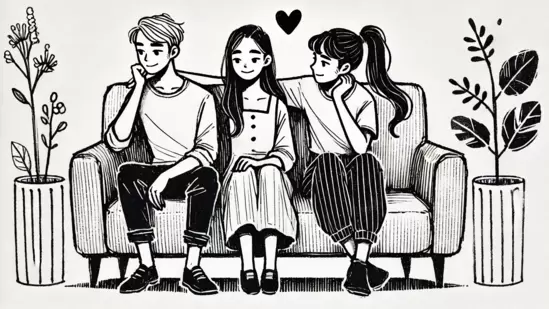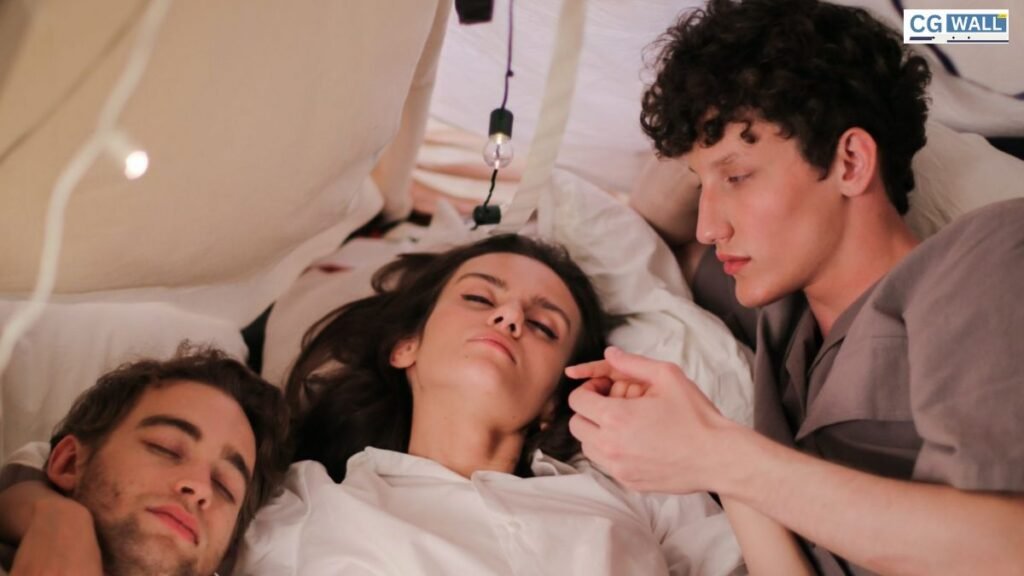| In Short |
| Symbiosexuality is the attraction to the dynamic and energy between two people in an established relationship. |
| A Seattle University study found that 145 participants reported experiencing symbiosexual attraction. |
| Symbiosexuals often identify as extroverted, enjoy closeness, and are less prone to jealousy. |
| Popular media, including Zendaya’s Challengers and Gossip Girl, has depicted symbiosexual relationships. |
| The concept challenges traditional views on romantic attraction and opens new avenues for research. |
The Rise of Symbiosexuality
Symbiosexuality is a neologism coined by researchers who describe the very special phenomenon where a person feels romantic or sexual desire toward an already-established couple, and not to each partner separately. This emerging trend has gained attention through studies published in journals, such as one conducted by researchers from Seattle University in Archives of Sexual Behaviour. Such a study shows how complicated human attraction can be and even defies conventional notions of romance.
Understanding Symbiosexuality: A New Perspective on Attraction
The idea of symbiosexuality far surpasses the ordinary idea of one-to-one attraction, be it romantic or sexual. According to Dr. Sally W. Johnston, in the same study, the symbiosexual attraction finds an affinity with the “energy, multidimensionality, and power” shared between two people within the relationship. A person isn’t attracted to any one of them but rather to the energy they exude when together.

The Study: Insights and Findings
Dr. Johnston’s study was part of larger research called The Pleasure Study, which aimed at exploring various dimensions of gender, sexual orientation, and relationship patterns. Of 373 participants, 145 reported experiencing symbiosexual attraction. Curiously, the majority of them identified as queer (over 90%) and polyamorous (87.5%). Most participants were white, middle-class university graduates, which underlines the need for further research into the diverse demographics who may experience symbiosexual attraction.
Dr. Johnston found that symbiosexuals appeared to be extroverted, enjoyed closeness, affection, and consideration, and generally spoke less about jealousy. This might help explain why such a person would favor the intricacies and often complicated interactions within an established relationship.

Cultural Reflections: Symbiosexuality in Media
The concept of symbiosexuality has not only been of interest to academics but has trickled into popular culture. The release of Zendaya’s movie Challengers placed new attention on polyamory and the sensation of “throuples” or three-person romantic relationships. Her character participates in a love triangle with two men, showing emotional tumult that can arise through such a relationship.
Other examples of symbiosexual relationships can be viewed on television, such as the show Gossip Girl and the documentary Tiger King. These further conceptualize symbiosexuality and bring it out to a wider world for deliberation on how attraction and relationships are changing.
The Broader Implications of Symbiosexuality
Symbiosexuality disrupts traditional notions of romance and intimacy by suggesting that attraction is not limited to people but rather the dynamics between people in relationships. A perspective of this sort opens up new possibilities for making sense of human desire and might allow greater inclusivity of conversations on various kinds of relationships.

With the number of studies increasing, it will be interesting to see how symbiosexuality manifests across cultures, sexual orientations, and social classes. This study’s participants were majority white and middle-class, suggesting that a lack of understanding exists concerning how this phenomenon might be experienced by people from diverse backgrounds.
The Future of Symbiosexuality
Symbiosexuality adds another fascinating wrinkle to the ways in which human beings experience desire. This is a discussion that, with society increasingly open to a greater variety of relationships, will most likely continue to occur and be subject to further research. Whether from the perspective of academic research or through popular culture, symbiosexuality offers a unique take on the challenges of love and desire.
For Latest News Updates, Click Here.
